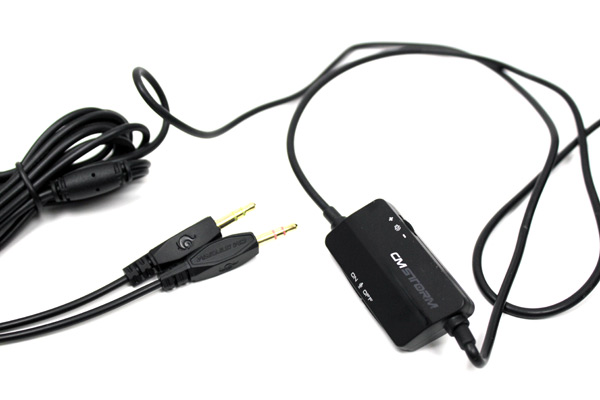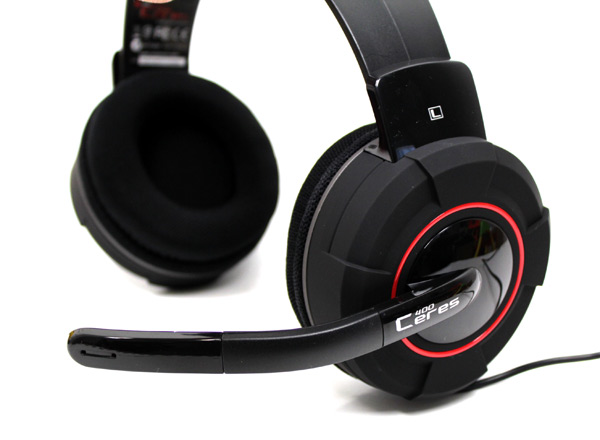Index
The in-line controller is positioned in such a way that the length is neither enough to let the controller rest on your leg, nor short enough to be level with the keyboard. Finding it by feeling your way around may be a bit difficult at times, especially in the dark. The Ceres 400 controller’s shape is a bit boxy, but we’ve overdone the nitpicking, since these are not major issues. The volume knob is small but easy to rotate. The microphone can be easily switched on or off by the remote on/off switch.
The in-line remote lets you control levels but don't forget about the volume controls on your PC. Additionally, remember to turn the sound down before you take the headphones out, because music going off at full volume in the middle of the night is not something your neighbors will appreciate.
Once again, we’d really like to see clearer distinction between the connectors, and although it’s definitely not a make-or-break feature, we’ll ask you how you like it when you’re behind the computer, fumbling with jacks in a rainforest of cables, dongles and antennas. True, the CM Storm features colored rings on the actual jacks, but the colors are pale and you won’t tell them apart in dark. A single marker on the headphone jack, rubber bump or as symbol would've done the trick, even if it’s on only one jack.
The cable is some 250cm long, which is a welcome change, especially since the Sonuz’s cable measures 193cm. The cable looks well made and it splits in two at the end - one connector for the headphones and the other for the mic. Note that the cable is not the shielded type we’ve seen CM Storm use and is a bit thinner, but we doubt there’s any actual difference in action.
The headphone boasts a frequency range of 20 – 20,000 Hz, an impedance of 32 ohms, and sensitivity of 108 +/- 4dB @ 1kHz. The speaker houses a large 40mm driver and of course, we're talking about a stereo headset. Of course, analog headsets require quality soundcards to reproduce the entire spectrum but we found the sound quite good, regardless of the device we used it on. Note that the Ceres 400 was somewhat quieter than the Sirius headset, but not by too much.
Ceres 400 doesn't have surround sound support like the Sirus, which is evident during gaming. Of course, we doubt you'll lose a battle over it, but we didn't mind. The simulated surround is good, but it's difficult to tell whether the sound is coming from behind or front.
Anyone who had the chance to try out Ceres 400 was quite pleased with the sound quality, including some audio geeks. Mid and high frequencies are clear but the highs are a bit muffled when the sound is maxed out, which is pretty much what you would get on the Sonuz.
The mic is omnidirectional and it's nice that it has a dedicated connector, which means you can use it independently in other programs as well.
Unlike the Sonuz, Ceres 400 has no removable mic, which is a shame since we thought they would’ve looked more presentable than the former when without the mic.
Specs-wise, the microphone boasts a frequency response of 100 Hz – 10.000 Hz with sensitivity of -30 +/- 3dB @ 1kHz and 1V/Pa, and a signal to noise ratio of 50dB. The mic can be turned on/off via the in-line remote.
The mic is omni-directional and sound quality is good. For the best results, you will have to fiddle with it and bend it just right. By default the mic is a few centimeters to the left of your jaw.
The mic is very robust but can bend a bit in the middle, which works quite well in pictures, but in reality it has a habit of bending back, so placing it right in front of your mouth is not that easy. 



